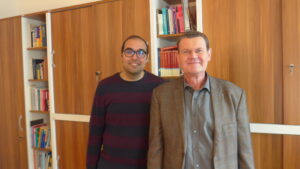DFG-funded Research Training Group Dimensions of Constructional Space (GRK 2839) – Project: Representation and Acquisition of Idiomatic Constructions in L1 and L2
Supervisors: Prof. Dr. Thorsten Piske, Prof. Dr. Lutz Edzard, doctoral candidate: Aria Rastegar
